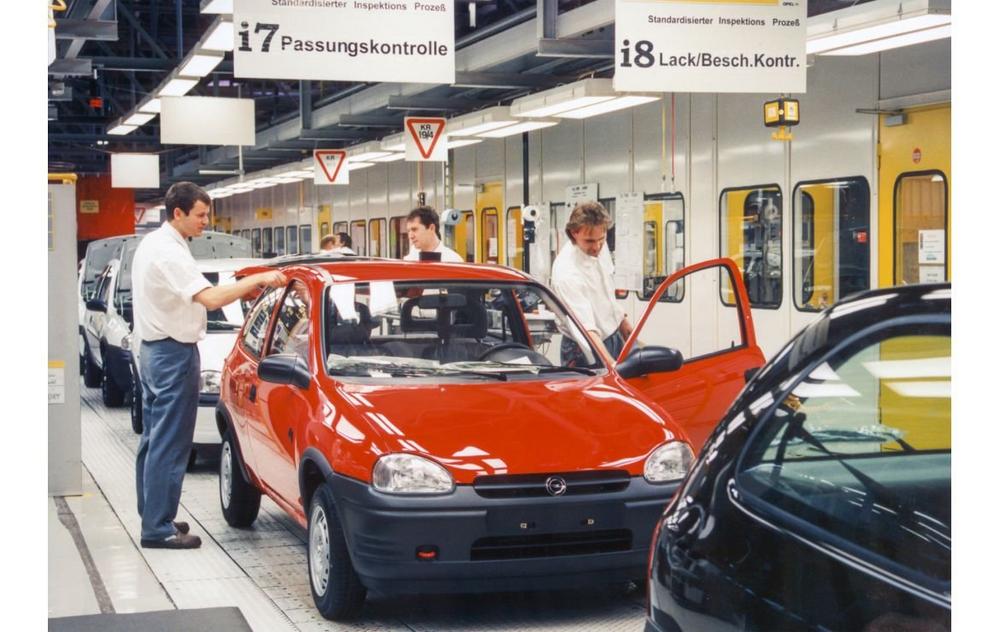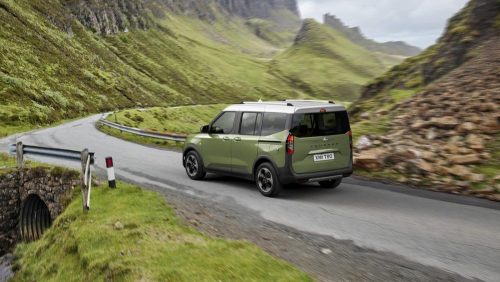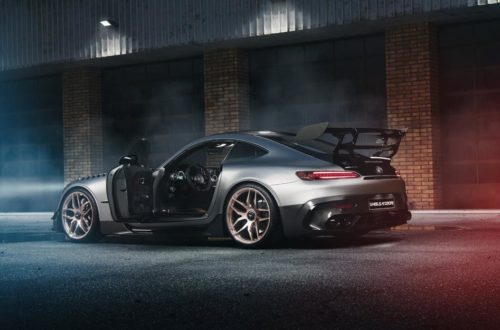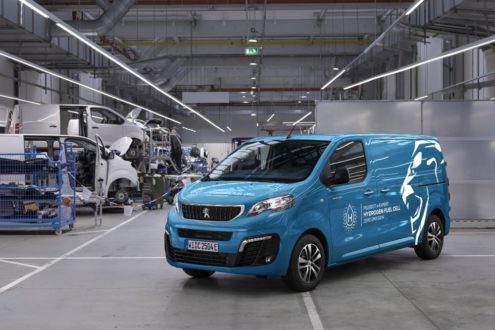
40 years of Opel Corsa: A Success Story in Six Acts
- Successful model: Over 14 million Corsas sold since 1982
- Pioneer: Opel introduces top technologies from higher classes in small car
- Bestseller: Sixth Corsa generation again a market success
- E-car: Electric Opel Corsa-e already accounts for around one-fourth of sales
2022 is an anniversary year for Opel: the company has been making innovations affordable for everyone for 160 years, and at the same time one of its biggest bestsellers is celebrating its 40th birthday. The Opel Corsa revolutionised the small car class with its premiere in 1982 and today, in its sixth generation, is more in demand than ever. Last year, the current Corsa was the most popular small car in Germany and the best-selling car in the UK. The battery-electric Opel Corsa-e won the “Golden Steering Wheel 2020”1, now already accounts for around one-quarter of Corsa sales and is successfully competing in motorsport as an emissions-free rally car.
But to fully understand the popularity of the Corsa since its debut in 1982, it is first necessary to look at another successful model with the Blitz – the Opel Kadett. Initially an approximately 3.8-metre-long small car conceived and designed to bring mobility to more people at a time when driving a car was still real luxury. Then over the decades customers quickly became more discerning as their prosperity increased. The small Kadett became larger and more powerful in the second half of the 20th century, moving closer to the compact class with the arrival of each version. This created a slot below what had become Rüsselsheim’s classic entry-level model.
So it was high time for a new, genuine small car – time for the Corsa. The new small model rolled off the production line for the first time in the autumn of 1982 in the newly built car plant in Zaragoza and immediately took off on its path to becoming a bestseller for Opel. To date – 40 years after its launch – well over 14 million units have left the plants, most of them produced in Zaragoza and Eisenach.
This success is due in no small part to the numerous top technologies that have been introduced in the various Corsa generations and that were previously only available in higher vehicle classes. These include safety and assistance systems such as ABS and airbags as well as the front camera with distance indicator, traffic sign recognition and lane keep assist and, most recently, the adaptive glare-free Intelli-Lux LED® Matrix light. Now in its sixth generation, the best-selling small car shows just how fit it is for the future. Since 2019, it has also been completely emissions-free for the first time: as the battery-electric Opel Corsa-e.
The Opel Corsa – A success story in six acts
Act One: Opel Corsa A 1982 to 1993
The Corsa A featured close-coupled proportions within a short length of just 3.62 meters. It had bold, flared wheel-arches like a rallye car and an exceptionally low 0.36 drag coefficient which was possibly record-breaking for its class. Chief designer Erhard Schnell had created a sporty small car with crisp, chiseled lines, intended to particularly appeal to ‘the man of the house’. The highlight was the 100 hp Corsa GSi, and diesel power was also introduced. The two-door hatch and notchback line-up was expanded in 1985 with the addition of the popular five-door model. The Corsa A became a highly acclaimed top seller with 3.1 million units built.
Act Two: Opel Corsa B 1993 to 2000
Despite the success of Corsa number 1, the decision was taken in Rüsselsheim to position its successor as a real ‘ladies’ darling’. Opel design legend Hideo Kodama set to work and created a much rounder, softer Corsa, with appealing ‘saucer-eye’ headlamps which perfectly fit with cute, child-like looks. The Corsa B was ten centimeters longer and much more spacious inside than its predecessor. It also introduced higher safety standards to its segment, including ABS cadence braking, side-impact protection and front airbags. For special markets, next to the hatchback Opel again offered a notchback as well as station wagon and pick-up variants. Petrol engines already had fuel-injection technology and catalytic converters, while the GSi featured 16 valves and diesel power was now turbo-charged. The second Corsa was successful around the world, and sales topped the four million mark.
Act Three: Opel Corsa C 2000 to 2006
In the spirit of never changing a winning team, Hideo Kodama was again asked to design the shape of the Corsa C. The styling was consciously oriented towards its successful predecessor. The Corsa grew again by ten centimetres to a total length of just under 3.84 metres and had a wider stance with a longer wheelbase, which greatly increased interior space. For the first time, the body was fully galvanized. Sophisticated four-valve ECOTEC petrol and new direct-injection turbo diesel engines ensured strong power, low fuel consumption and lowest emission values – all variants already complied to the Euro 4 emission standards. The Corsa C also became a star performer and sold 2.5 million units.
Act Four: Opel Corsa D 2006 to 2014
From now on, the three and five-door versions go their separate ways: the three-door Corsa has unique, coupé-like styling aimed at sporty customers, just like the original Corsa A. The five-door variant becomes a spacious, fully-fledged family car. The Corsa D was still less than four meters in length, having grown to exactly 3.999 meters. With Opel’s ecoFLEX technology, the Corsa had fuel-saving Start/Stop systems and highly efficient engines. The 1.3 CDTI ecoFLEX version consumed just 3.3 l/100 km over the combined cycle and emitted only 88 g/km CO2 (according to NEDC). The fourth generation Corsa sold over 2.9 million units.
Act Five: Opel Corsa E 2014 to 2019
Dynamic, practical and stylish, the Corsa E is also a bestseller with around 1.3 million units sold. The fifth generation is also built in the Opel plants in Zaragoza and in Eisenach. For the first time, the small star tops the four-metre mark, offering high comfort and top technologies over a length of 4.02 metres. Heatable steering wheel, seat heating and automatic climate control are of course on offer, as are the front camera with distance indicator, Traffic Sign Recognition and Lane Keep Assist. Corsa drivers are optimally connected with the Apple CarPlay and Android Auto compatible IntelliLink infotainment systems including a seven-inch colour touchscreen. The small car’s sporty top-of-the-line model is initially the 152kW (207hp) Corsa OPC and later the Corsa GSi with 110kW (150hp).
Act Six: Opel Corsa F electric version introduced in 2019
Opel is optimally equipped for future challenges with Corsa number 6. The latest generation of the small car, which celebrated its world premiere at the 2019 Frankfurt International Motor Show, is also available as a purely battery-electric, emissions-free version for everyone for the first time. A real highlight is also the adaptive glare-free Intelli-Lux LED® Matrix light, which Opel also offers for the first time in the small car segment with the current Corsa. In addition, there are numerous state-of-the-art assistance systems such as Forward Collision Alert with Automatic Emergency Braking and pedestrian detection as well as radar-based Adaptive Speed Control, which make driving even safer and more relaxed. With a length of 4.06 metres, the five-seat Corsa’s handling, clear lay-out and practicality remain exemplary. The coupé-like roof line is 48 millimetres lower than its predecessor – without any detriment to headroom. The driver sits 28 millimetres lower. The low centre of gravity benefits driving performance and handling. The latest Corsa is more direct and more dynamic – for more fun behind the wheel. With this recipe for success, the small car with the Blitz has once again become the most popular small car and the best-selling car in countries such as Germany and Great Britain respectively.
The battery-electric bestseller is proving its electrifying effect on the public in several ways: in Germany, the series-production Corsa-e won the “Golden Steering Wheel 2020”1 – and as a modified Corsa-e Rally, it is demonstrating in motorsport how top performance and environmental compatibility can be combined. With the emissions-free small car, Opel is the first manufacturer to develop a battery-electric rally vehicle that has been competing in the ADAC Opel e-Rally Cup, the world’s first electric one-make rally cup, since 2021, thus showing the future of rallying.
[1] “Golden Steering Wheel 2020” Opel Corsa-e: AUTO BILD & BILD AM SONNTAG issue 45/2020, category “small car”.
Opel Automobile GmbH
Bahnhofsplatz
65423 Rüsselsheim
Telefon: +49 (6142) 7-70
Telefax: +49 (6142) 77-8409
http://de-media.opel.com/de
Telefon: +49 (6142) 6927466
E-Mail: leif.rohwedder@opel-vauxhall.com
Telefon: +49 (6142) 6921576
E-Mail: jan-philipp.kress@opel-vauxhall.com
![]()



